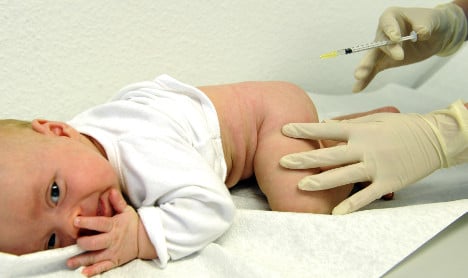Discovering how a foreign country ticks differently than your own can be fun part of living overseas, but doing it while naked certainly raises the bar a bit.
Back home in Canada, it took awhile to get used to the annual check-up that was required by my doctor for a birth control prescription. You lie under a paper sheet, look at the ceiling and five minutes later, you’re done. Then I moved to Germany.
A “routine” check-up in a foreign land can be anything but routine. All of a sudden, you’re dealing with a different culture and its particular quirks. I’m fortunate to at least speak German, since both of my parents are originally from Cologne. They moved to Canada two years before I was born and now my husband and I have done the reverse — even down to the having a baby two years after coming to Berlin.
Going to any doctor’s office in Germany starts off with a stop in waiting room, where I’ve noticed every new person walking into the room greets the patients already waiting. If it’s your first visit, you’ll want to bring along a German-English dictionary for the medical history questionnaire. Even if you’ve found a doctor that speaks English, this questionnaire will be in German and the nurses might not be able to help you out. Once you get called into the doctor’s office, you’ll start with a quick consultation regarding what you’re there for — whether its for birth control (Geburtenbeschränkung or the awful-sounding Antibabypille) or because — congratulations! — you’ve had a positive pregnancy test (Schwangerschaft).
When you move into the examination room, there is probably some sort of screen for you to undress behind, but don’t expect it to be private. If you’ve lived in Germany for awhile you’ll know Germans aren’t particularly shy about nudity. After disrobing, you walk over to the doctor’s chair in all your glory. This can disturb some expats on their first trip to a German obstetrician. Unlike a visit at home, I was not shielded from the sight of the examination by a paper towel. I sat in a chair and the exam began. Oh right. The chair.
While there is an examination table in most offices, for some visits you’re in a chair specially designed for gynaecological purposes. You sit down and recline, but you’re still face-to-face with the doctor, while all of those medical instruments remain in plain view. As is what he or she is doing down there. Oh — and German doctors seem to like to make conversation.
In North America, a normal pregnancy only gets the first ultrasound (Ultraschall) between 18 to 20 weeks, unless there’s some risk. But at 14 weeks pregnant, I’ve already seen Baby Devins twice. The ultrasound is used in Germany as a diagnostic tool. Even with your bi-annual check up, you can expect to get a vaginal ultrasound to check for growths in the uterus. The first time to confirm the pregnancy at six weeks while the second was to make sure all is going well.
As a result, I know we’re expecting just one baby and he or she is just fine. It’s very reassuring — especially in your first weeks of pregnancy when all you have for “proof” is a positive pregnancy test and that odd feeling you can’t shake. It’s not uncomfortable (a pap smear causes more discomfort) and totally worth being able to see your little one for the first time — or, God forbid, get an early cancer diagnosis.
There is also a difference in care between private and public insurance holders. While doctors will obviously see patients holding either card, those with private insurance will have more ultrasounds as well as other tests that are covered by their insurance.
Regardless of your insurance, during the first months of your pregnancy, the OB/GYN, or (Frauenärtzt/in), will expect to see you every four weeks. In the latter weeks, you’ll see each other every two. But don’t expect your doctor to be a familiar face in the delivery room. Most will take care of you throughout your pregnancy, but on delivery day, you’ll be in the hands of the doctor at whatever hospital you choose and your midwife (Hebamme), whom you’ll meet around week 30.
While North Americans such as myself might be a little shocked by the casual attitude toward waist-level nudity and vaginal ultrasounds, living abroad is about making adjustments to the local culture. Fiona Kamps, a German living in Vancouver, Canada, found herself equally flabbergasted when she had to visit the OB/GYN for the first time there. “It’s so primitive,” she said of her Canadian experience.
But those cultural differences are exactly what this regular column hopes to address. That way you can focus on the important things during your pregnancy in Germany – like whether you’ll have to name your kid Karl-Heinz or Dagmar.



 Please whitelist us to continue reading.
Please whitelist us to continue reading.
Member comments